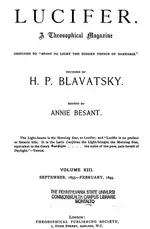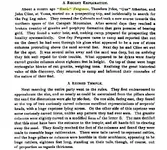Old Bookaroo
Silver Member
- #1
Thread Owner
The Peg Leg Smith Chronicles - 19th Century Newspaper Articles
Peg-Leg Smith.— Nevada Gazette gives the following biographical item, which is characteristic of this old mountaineer :
Peg-Leg Smith, whose death was recently announced, as most of our readers are aware, was an old mountaineer, and one of the most noted of his class. He was the contemporary of Greenwood, Bill Williams Walker, Joe Meek, Black Harris, and the older class of mountaineers, and his active career had well nigh closed when Fremont made his first trip to the Rocky Mountains. For many years he has lived In California, but those who have only seen him here as a poor, broken down old man, can have but little idea of what he was in his younger days, when by his superior sagacity and coolness he was instinctively chosen the leader, either in an Indian fight or a horse stealing raid. Many stories are told in the mountains of his daring achievements and hair-breadth escapes, some of which are doubtless fictitious, but his least adventures, if properly written out, would till an interesting volume. One of his most successful and profitable adventures occurred about forty years ago, when, with some dozen followers, he made a trip to Southern California. Either from some misbehavior on their part, or on account of a suspicion as to their intentions, the Californians ordered Peg-Leg and his party to leave the country. They left, as entered, but took with them between three and four hundred head of horses. The Californians immediately raised a considerable force and started in pursuit of the raiders following them through a pass of the Sierras. Being well mounted, the Californians were rapidly gaining on Peg-Leg's party, who were encumbered with their pack animals and the large drove of stolen horses. Knowing they would be overtaken, Peg-Leg resorted to strategy. After crossing a desert of some twenty or thirty miles, they came to a stream of water where the party divided, four of the men being sent ahead with the horses and the remainder secreting themselves among the willows along the bank of the stream. As anticipated, the thirsty Californians dismounted for a drink as soon as they reached the water whereupon Peg-Leg and his party rushed from their hiding place with an Indian war whoop, and ere the astonished Californians recovered from their surprise, their horses were stampeded and driven off by the daring mountaineers. The Californians were thus left on foot, and how they got back was never known. Peg-Leg and his followers returned to the mountains, with what they considered their honestly acquired property. This incident was related to us in 1845, at Fort Hail, by an old mountaineer, who was one of the party.
Sacramento Daily Union, 27 October 1866 (Volume 32, Number 4862)
Did Not Find the Peg Leg.
Dan Higgins, an old time prospector who has spent much time in searching for coal and minerals on the Colorado desert, returned Sunday after a long trip into the supposed "Lost Peg Leg" mine country, says the Yuma Sentinel. He brought back some fine specimens of silver ore which he took from the veins, and also some excellent samples of coal which he found in narrow seams, near where he picked up the large piece several months since. The largest seam was about six inches thick on the surface. The quality is good. It has all the appearance of the imported channel coal. He believes that the small seams will all unite when depth is attained. There is no doubt but that good coal will be found in paying quantities in the coal measure which is known to exist in the great valley just west of Yuma.
Los Angeles Herald, 22 May 1892 (Volume 38, Number 41)
TWO MINING EPISODES.
Another Search for the Peg Leg
[TABLE="width: 696"]Another Search for the Peg Leg
[TR]
[TD]Another expedition has started on a search for the lost Peg-leg mine, for which hundreds have braved the terrors of the desert, and many have died on its burning Bands, says' the San Diego Union. On Thursday Messrs. Converse and Grigsby left Campo prepared for an extensive exploring and prospecting expedition. Mr.Converse has been trapping and hunting on the desert, and up and down the Gila and Colorado rivers for years, and has been very successful as an explorer. From his experience and observations he is of the opinion that he knows just where the Peg-leg mine is located. He says that the three little buttes which Peg-leg Smith described are in a low basin in a depression in the desert, and cannot be seen until one approaches very close. He said before starting that he had been on one of them and that it was covered with volcanic glass. The middle one has a yellow, chalky appearance about half way up, and on the summit it is quite black. In his opinion this is where Peg-leg found his gold, it being the highest of the three, and one which a lost person would naturally climb to take observations. The expedition will investigate that portion of the desert which has never been explored, Mr. Converse having passed through the locality in a boat during the overflow into Salton sea.
Los Angeles Herald, 1 October 1892 (Volume 38, Number 173)
THE NEW YEAR'S HERALD.
The Pegleg Smith mine bobs up with accustomed regularity. There was a Smith and he had a peg-leg, but his mine was in his mind's eye. While following a mirage he probably found some iron pyrites, but as to gold never. Still people will always believe the story along with the Lost Cabinmine and other fables, and many like Tom Cover will lose their lives looking for it.
Los Angeles Herald, 22 December 1892 (Volume 39, Number 72)
Obstinately Remains Lost.
The Peg-Leg Gold Mine Declines to Be Found.
YUMA, Ariz. March 15.- Dan O'Toole and Ben Snead, two old prospectors and miners, returned from the Salton Basin today, where they have been for weeks, searching for the famous lost Peg-leg gold mine. They found no gold, but an abundance of water. They met H.D. Converse, the veteran trapper, on the desert. He had found three large, fine soda springs, here-before unknown. O'Toole and Snead are of the opinion that no mineral exists in that portion of the desert. East of the Carriso or San Jacinto Mountains they found the trail of Doran and Bell, also lost mine explorers, who had left for home.The Peg-Leg Gold Mine Declines to Be Found.
San Francisco Call, 16 March 1893 (Volume 73, Number 106)
[TABLE="width: 731"]
[TR]
[TD]
ARIZONA'S BONANZA.
Belief That the Old Peg-Leg Mine Has Been Found.
Yuma (Ariz.), July 10.—It is now generally believed that the gold mine found near Indio, on the desert, by the McHaney brothers, is the old "Peg-Leg" mine, found by Peg-Leg Smith and party sixty years ago. The quality of quartz, old workings, human bones, kind of gold, richness and location indicate that it is the old mine. It is producing from $300 to $l,000 per day. Two million dollars has been offered for the property.
[/TD]
[/TR]
[/TABLE]
Sacramento Daily Union, 11 July 1895 (Volume 89, Number 120)
Good luck to all,
~The Old Bookaroo
[/TD]
[/TR]
[/TABLE]
Amazon Forum Fav 👍
Last edited:







